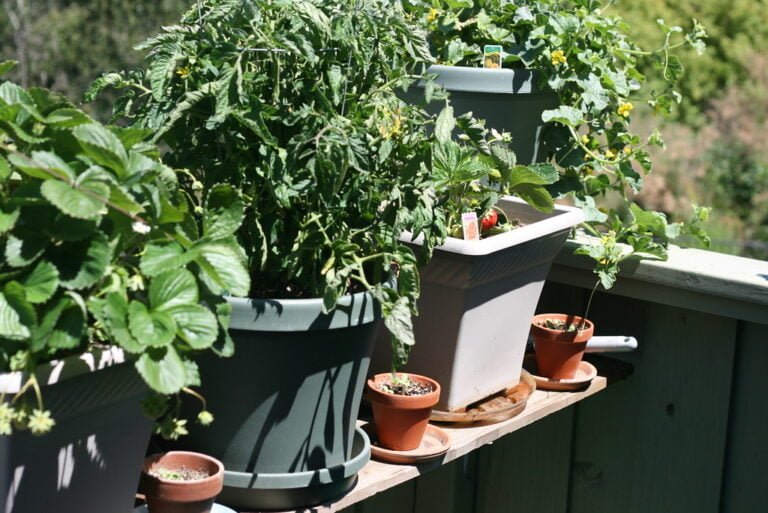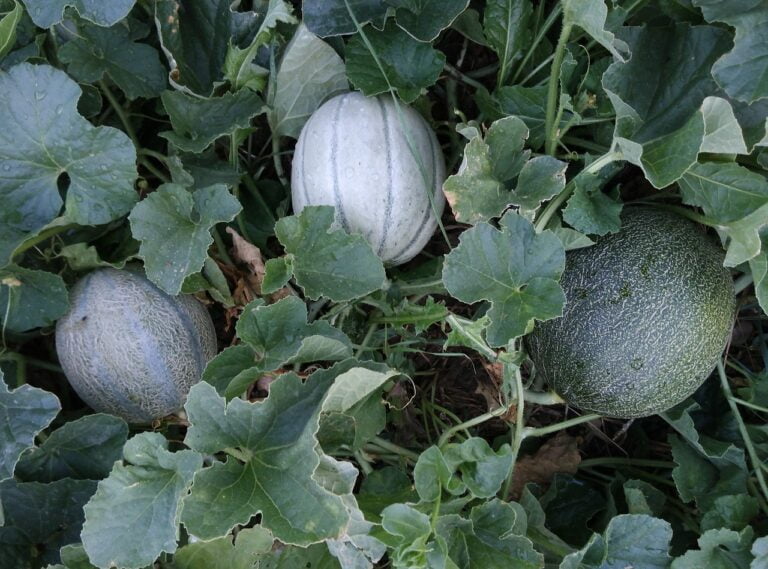A Comprehensive Guide to Sowing Rosemary
When planting rosemary, keep in mind it craves full sunlight, fertile well-draining soil, and a Mediterranean-like climate. Choose high-quality seeds suitable for zones 6 to 10, prepare them through scarification and cold stratification, then transplant for ideal germination in about 14-21 days. Take care of your seedlings by maintaining 6-inch height, pruning regularly, and watering consistently in a well-draining pot. When it’s time to transplant, select well-draining soil, handle delicately, and water right after. Remember, pruning helps with bushiness. Proper soil with a pH of 6 to 7 is crucial. Ensure balanced soil nutrients and regularly check moisture and pH levels. Mastering these steps sets the stage for healthy rosemary growth to enjoy.
Rosemary Planting Conditions
When planting rosemary, it is essential to make sure that the selected location receives full sun and has fast-draining, relatively fertile soil for the best growth. Rosemary, a Mediterranean herb, thrives in these growing conditions. To guarantee ideal development, the planting site should provide at least 6-8 hours of direct sunlight daily. This herb prefers well-draining soil to prevent root rot, making a mix of sand, perlite, or gravel ideal for enhancing drainage.
When choosing a planting area, consider the hardiness zones suitable for rosemary, which typically range from zones 6 to 10. These zones offer the appropriate climate for the herb to flourish. Additionally, maintaining consistent soil moisture is essential. Rosemary plants require regular watering while allowing the soil to dry out between waterings to prevent waterlogging, which can harm the plant’s roots.
To promote healthy growth, ensure the soil is fertile by amending it with compost or well-aged manure before planting. This step provides the necessary nutrients for the rosemary to thrive. By selecting a location with full sun exposure, fast-draining soil, and paying attention to soil moisture levels, you set the foundation for successful rosemary cultivation.
Seed Selection and Preparation
When selecting rosemary seeds for planting, prioritize high-quality seeds with a proven high germination rate to guarantee successful growth and development. When choosing seeds, consider the specific climate and soil conditions of your region to ensure peak performance. Rosemary thrives in well-draining soil with plenty of sunlight, so selecting seeds that match these requirements is vital for successful cultivation.
Before sowing, it’s crucial to prepare the seeds properly. One method is scarification, which involves gently nicking or scratching the seed coat to aid in water absorption. This process can improve germination rates and speed up the overall growth of the plants. Additionally, cold stratification is another technique that can benefit rosemary seeds. By refrigerating the seeds for 4 to 6 weeks, you simulate winter conditions and break seed dormancy, promoting germination once planted.
Proper seed selection and preparation are fundamental steps in ensuring the successful sowing and cultivation of rosemary plants. By paying attention to these details and following the necessary procedures, you set the stage for healthy growth and robust plants in your garden.
Germination Techniques for Rosemary Seeds
To guarantee successful germination of rosemary seeds, it is essential to provide the best conditions of light, temperature, and soil drainage. Rosemary seeds typically take 14-21 days to germinate at a temperature range of 65-70°F (18-21°C). The recommended sowing method for rosemary seeds is transplanting. Light is important for the germination process, so make sure the seeds receive adequate light during this stage. Additionally, successful germination requires well-drained soil to prevent waterlogging, which can hinder the process.
When transplanting rosemary seedlings, it is crucial to follow specific guidelines to promote optimal growth. As the seedlings develop, they should be transplanted carefully into individual containers or a garden bed, ensuring they have enough space to grow. Maintain consistent watering, ensuring the soil remains moist but not waterlogged.
The temperature during the germination phase plays a significant role in the success of the process. Keep the seeds in a warm area with indirect sunlight to provide the ideal conditions for germination. By following these techniques and guidelines, you can increase the chances of successful germination and establish healthy rosemary plants for your garden.
Care Tips for Rosemary Seedlings
For ideal growth of rosemary seedlings, maintaining a perfect height of around 6 inches is key to encouraging bushier foliage development. This height guarantees that the plant receives enough light and airflow, which are essential for its overall health. Thinning is important for seedlings, especially when growing them in a 7-inch diameter pot. To promote bushier growth, limit the number of seedlings to a maximum of 5 in a pot to allow proper spacing and prevent overcrowding.
Regular pruning is also necessary for rosemary seedlings. Pruning helps maintain the desired shape of the plant and stimulates new growth. It’s best to trim the tips of the branches regularly to encourage a fuller and bushier appearance.
Consistent watering practices are crucial for the health and development of rosemary seedlings. Ensure the soil is moist but well-drained to prevent waterlogging, which can lead to root rot. Water the seedlings when the top inch of the soil feels dry to the touch, typically every 1-2 weeks depending on the environmental conditions.
When growing rosemary from seeds, choosing the right pot size is vital. Opt for a pot that provides ample space for root development and allows for proper airflow. Following these care tips will help you nurture strong and healthy rosemary plants from seedlings.
Transplanting Rosemary Seedlings
When moving rosemary seedlings to new soil, remember to choose a spot with well-draining soil and ample sunlight. Delicate handling is key to prevent root damage during transplantation. Settle the seedlings in by watering them right after planting to aid in their adjustment.
Soil Preparation Tips
How important is it to select a well-draining soil mix with a pH range of 6.0-7.5 when transplanting rosemary seedlings? It is vital to provide the right soil conditions for the health and growth of your rosemary plants. Here are some essential tips for preparing the soil before transplanting:
- Use a soil mix that drains well to prevent waterlogging and root rot.
- Opt for sandy or loamy soil types that offer good drainage and aeration.
- Incorporate organic matter such as compost to enrich the soil with nutrients.
- Maintain appropriate moisture levels by allowing the soil to slightly dry out between waterings.
Proper Transplanting Techniques
Select a location with ample sunlight and well-draining soil to guarantee successful transplanting of rosemary seedlings. When transplanting, make sure the seedlings have at least 2 sets of true leaves. Handle them delicately by their leaves to protect the fragile stems. Opt for a well-draining soil mix to prevent waterlogged conditions and potential root rot. Space the seedlings a minimum of 12 inches apart to allow for proper air circulation and room for growth. Water the transplanted seedlings gently but thoroughly to aid in their adjustment and reduce transplant shock. Following these steps will help the rosemary seedlings thrive in their new environment.
Maintaining Healthy Rosemary Growth
To sustain healthy rosemary growth, I make sure watering is done sparingly to prevent root rot, trim the plant regularly to promote bushier growth, and use a balanced fertilizer in the spring for ideal nutrient support. These practices help keep my rosemary thriving, flavorful, and robust throughout the growing season.
Watering Frequency Tips
Maintaining healthy rosemary growth involves watering deeply but infrequently to prevent waterlogged soil and promote ideal root development. To guarantee ideal growth, follow these watering frequency tips:
- Water deeply: Allow the water to penetrate the soil deeply during each watering session.
- Water infrequently: Let the top inch of soil dry out between watering to prevent root rot.
- Adjust watering frequency: Tailor your watering schedule based on factors like temperature and humidity.
- Young seedlings: Water more frequently to assist in establishing a strong root system without waterlogging the soil.
Pruning for Bushiness
How can rosemary pruning promote bushier growth and maintain the plant’s health? To encourage denser foliage and prevent legginess, it is important to prune rosemary regularly. When pruning, focus on removing about 1/3 of the plant’s height or up to 1/4 of its total growth. Concentrate on cutting the stem tips as this will stimulate branching, resulting in a bushier appearance. It is best to perform spring pruning before new growth begins or after the plant has finished flowering. Always use sharp pruning shears to make clean and precise cuts, minimizing the risk of damaging the plant. By following these pruning practices, you can promote healthy and vigorous growth in your rosemary plants.
Soil Nutrient Requirements
Establishing that rosemary is planted in well-drained, sandy or loamy soil within a pH range of 6 to 7 sets the foundation for healthy growth. Here are key points to ponder for maintaining ideal soil conditions:
- Balanced Soil Nutrients: Provide essential elements like nitrogen, phosphorus, and potassium to support the overall health and development of rosemary plants.
- Organic Matter Enrichment: Integrate compost or organic matter into the soil to enhance fertility and improve nutrient availability for the rosemary.
- Soil Moisture Regulation: Monitor soil moisture levels closely to prevent waterlogging, which can lead to root rot and hinder the plant’s growth.
- Regular Monitoring: Check and adjust soil pH and nutrient levels regularly to ensure that the rosemary’s nutrient requirements are met for robust growth.






